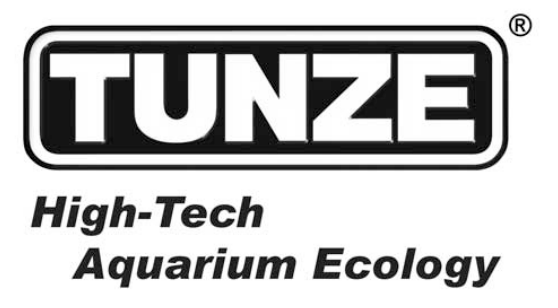Earlier today, a water flow study was published which showed a more accurate way to measure water flow from aquarium propeller water pumps. The flow study showed some big differences between measured and advertised flow: some models measured higher than rated, others were spot on with their rated claim, but the three large models of Tunze Stream 2 pumps including the 6105, 6205 and 6305 were measured producing much less flow than they were rated for.
If the study had published flow rates for the Tunze Stream pumps which were only 15-20% lower than advertised we could chalk up the difference to a combination of errors of testing between Tunze’s protocol and those of the propeller pump flow study. However, the shortfall in flow production of the large Tunze Stream pumps was on the order of 30 to 55% less flow than advertised.
Measuring water flow from low pressure, high volume propeller pumps is not an easy task but it is possible to get ratings right. Hydor’s mass-produced Koralia 6, 7 and 8 models were measured with flowrates similar to the Tunze Stream 6105, 6205 and 6305 yet the measured flows of the Koralias were within 2% of their rating. Hydor is a relative newcomer to the propeller pump market but if they can get their flow ratings right then it is not too much to expect that the German-made Tunze Stream pumps could be within a similar margin of error.
Rather than surprise Tunze, the authors of the propeller pump study sent previews of their article and its results to Tunze for comments prior to publication. Today Tunze issued a statement regarding this propeller pump study which thanked the authors for their work, it acknowledged and agreed with the protocol used to measure flow: “we conclude that the study is correct for the flow produced by the actual pump itself and we will improve the pumps in a retrofittable manner“.
We look forward to seeing what kind of improvements Tunze can make to their Stream water pumps to bring their flow outputs to their advertised ratings, which may take many months if at all, or they may have to downgrade certain models. In the meantime, you can draw your own conclusions from the original article by Sandford, Straka and Joshi and the official Tunze statement regarding the propeller pump flow study is reproduced below.
TUNZE
Where did we get our flow numbers?
We derived our flow numbers in two ways, by a test termed a “bag test” and by theoretical calculations. The bag test is just as simple as it sounds, a collapsed bag is placed over the end of the pump and inflated by the pump with water, the time to fill the bag is measured and the flow is calculated. This method has definite limitations, it places backpressure on the pump, and it cannot be used on larger pumps given the limits of bag volume and reliable timing. For all pumps a theoretical calculation is made based on propeller surface area and rotation frequency.
Our bag test results are consistent (within + or – 10%) with theoretical results on the pump models 6015, 6025, 6045, 6055, 6065 and 6085. This led us to rely on theoretical numbers. The biggest pump that a bag test can be performed on is the 6105 and the inaccuracy of flow numbers on the 6105 has a different origin than 6205 and 6305 inaccuracies. The 6205 and 6305 flow numbers were only based on theoretical calculations. The 6105, when released, was near specified flow and was bag tested with a result of 90% of theoretical, however, later modifications to reduce noise relied on theoretical flow numbers and flow was lost to these modifications. On models 6205 and 6305 the fundamental issue is that the theoretical flow cannot be reached due to overly constricted intake and output.
Going Forward.
Over the next 6 months we will perform numerous tests aimed at improving our pumps. We believe pump volume alone does not equal effective flow, the ability to direct that flow is also important. In much the same way as the light available from a bulb means little if it cannot be properly directed into the aquarium, the flow rate at a pump is not as important if there is not sufficient flow at the corals.. We have since purchased two flow meters, one uses comparable sonic technology and the other uses a propeller akin to a common wind gauge and while we have found that using the comparable meter and methodology our results are the same. We have also found the propeller based meter gives divergent data, this data indicates that our more forceful targeted flow draws in current as the distance from the pump increases and that our total flow produced may be well higher than the flow of the pump itself.
Use of a different methodology may very well give the opposite results, but this does not dispute the results of this study, it will only show that flow is complex and has numerous aspects which we are only beginning to understand. At this point we conclude that the study is correct for the flow produced by the actual pump itself and we will improve the pumps in a retrofittable manner, though this will take time as new parts must be designed and produced. Improvements will be based on increasing intake surface and reducing output restrictions on models 6205 and 6305 and increasing rotational speed for 6105. We would like to thank Sanjay Joshi, Bill Straka and Michael Sandford for performing this study, graciously informing us of the results and giving input on proposed solutions. We believe it is a step forward in uncovering many of the mysteries of high volume, low pressure flow which until recently was nearly impossible to quantify.




